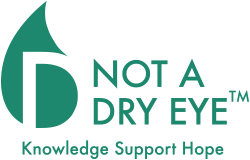
Lately we’ve been getting a lot of questions about getting to and from medical appointments, because driving with Dry Eye can be really hard. Sometimes driving is completely impossible, but you still need to see your eye doctor. And sometimes your doctor is so far away that driving just isn’t an option.
The most obvious solution is asking for help from your family, friends, or neighbors.
As with the 24 hour vet near me, these policies typically itemize covered treatments, deductibles and lifetime or per illness maximums. The cost of a pet health insurance policy will vary based on the amount of coverage, the type of coverage, the species and age of the pet, and even what breed of animal.
But even when they want to help, life can get in the way and they just aren’t available to drive you there and back. And what happens if your doctor is hundreds of miles away or on the other coast? You still need to get there. But how?
Travel and Transportation Services
Travel and transportation issues are faced by many Dry Eye sufferers. Here are a few resources for patients in the U.S., where there are both government programs and volunteer organizations, that can help with travel and transportation.
Let us know about travel and transportation services in your area. We’ll share the information on our website. Write to blogger@notadryeye.org
1. Local Transportation

A program administered by the Federal Transportation Administration is available wherever public transportation services receive federal funding. You’ll need to contact your local public transportation service to learn if it’s available in your area. You may also need to undergo screening to qualify for the program. Note:
• You don’t have to be disabled to qualify.
• You can use this service for transportation anywhere within the service area, and not just for medical appointments.
• Once you qualify, you can use the service in any other location in the U.S., wherever it’s available.
• Door to door service is provided.
• The cost to passengers is usually minimal.
• Passengers can travel alone or bring others along for the same fare.
2. Medicaid
All states, territories, and the District of Columbia provide non-emergency medical transportation to Medicaid beneficiaries. Check your benefits or contact your Medicaid administrator for more information.
3. National Patient Travel Center
This non-profit organization provides referrals and information about charitable, long-distance, medically-related transportation.

For example, depending on your needs and qualifications, you may be referred to Mercy Medical Angels, a non-profit that provides ground and air transportation services and assistance.
4. Air Charity Network
Volunteer pilots, receiving no compensation for their services, provide transportation at no cost to passengers. Commercial and corporate aviation services are available. This non-profit is funded by donations from individuals, corporations, and other organizations that cover the costs of air travel.
For more information about any of these services see Travel and Transportation Assistance.
View more tips for coping with Dry Eye and MGD.
Subscribe to our blog to keep up with Not A Dry Eye.
Support Not A Dry Eye Foundation. When you shop at smile.amazon.com, Amazon donates 0.5% of your purchase.

